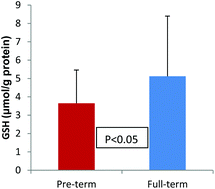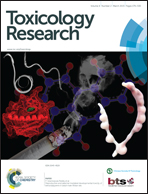Persistent organochlorine pesticides and oxidant/antioxidant status in the placental tissue of the women with full-term and pre-term deliveries
Abstract
In India pre-term birth is the leading cause of death of infants and this number is continuously increasing. Pre-term birth is an increasingly prevalent complex condition with multiple risk factors. Very few studies have focused on the effect of oxidative stress due to organochlorine pesticides in pre-term deliveries. The aim of this study was to analyze the organochlorine pesticide residues in the placenta of females with pre-term and full-term deliveries and assess the levels of glutathione and malondialdehyde as oxidative stress markers and to correlate them with organochlorine pesticide levels. Fifty cases of full-term deliveries and forty cases of pre-term deliveries were included in this case-control study. The residues of organochlorine pesticides, such as dichlorodiphenyltrichloroethane (DDT) and its metabolites i.e., (p,p-DDE, p,p-DDT, o,p-DDD) and isomers of hexachlorocyclohexane (HCH) (α, β, γ and δ), were analyzed by a gas chromatography instrument equipped with an electron capture detector. Oxidative stress was measured by the quantification of malondialdehyde (MDA) and reduced glutathione (GSH). In placental tissue from the pre-term delivery, significantly higher levels of α-HCH, total HCH, p,p-DDE and total DDT were recorded than in the placental tissue from the full-term delivery. The MDA level was significantly elevated, while GSH level was significantly lowered in the placental tissue of women with pre-term delivery compared to women with the full-term delivery. There were significant positive correlations of placental pesticide (α-HCH, γ-HCH & total HCH) levels with MDA (p < 0.05), suggesting that pre-term delivery are pesticide-induced. In conclusion, organochlorine pesticide residues are associated with oxidative stress and we cannot rule out the possibility of the role of organochlorine pesticides in pre-term deliveries.


 Please wait while we load your content...
Please wait while we load your content...